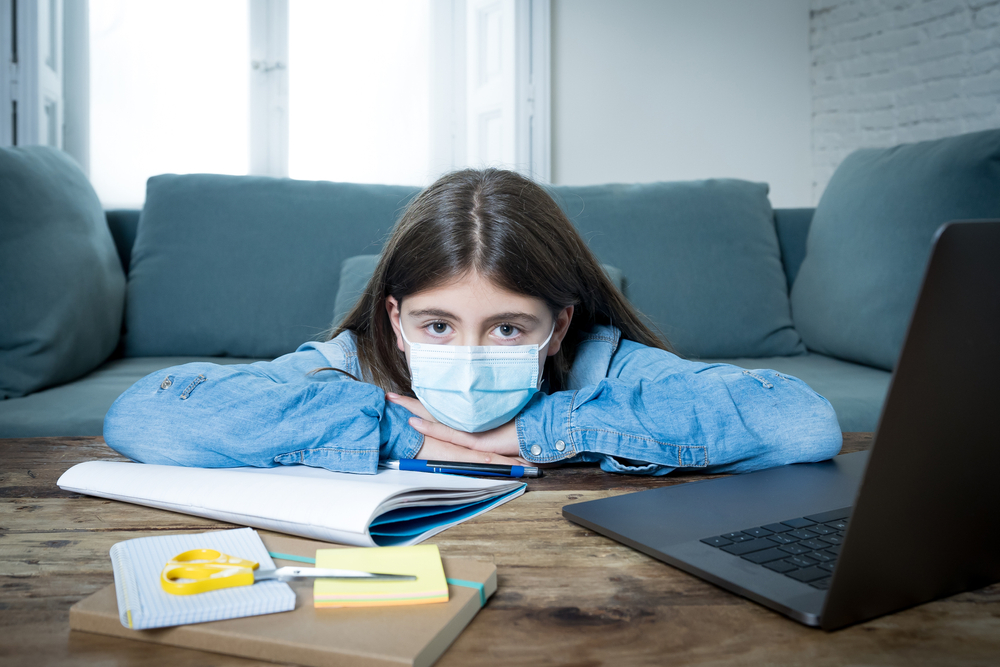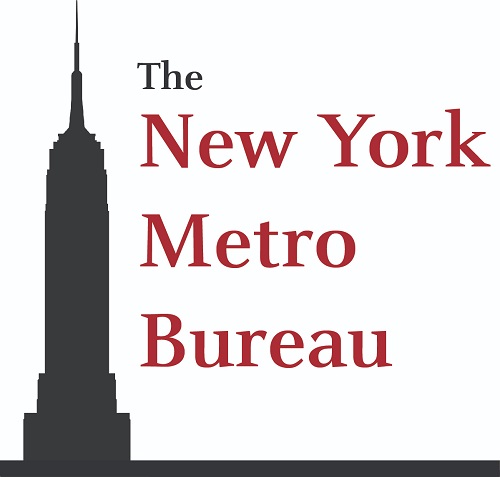
Sam Wordley/Shutterstock
As many students have navigated the COVID-19 pandemic, they also have battled depression, anxiety and other mental stressors.
As the pandemic raged across New York City in spring 2020, Jose Rivera trekked from the Bronx to Coney Island, Brooklyn to Far Rockaway, Queens, dropping off 100 computer tablets and dozens of food vouchers to public school students, including undocumented Yemenis and Bangladeshis and their families.
The tablets had been paid for by Good Shepherd Services, the nonprofit agency that has partnered with PS 292, the Brooklyn middle school where Rivera works as director of its community school, a construct aiming to improve attendance and pare dropout rates among some of the poorest and most disadvantaged students.
The undocumented immigrants students among them, Rivera said, were too afraid to join the legions of New York City students who, during remote learning, had asked the Board of Education to supply their tablets. But, as community schools director, a key part of Rivera’s role is overseeing mental health counseling for students and helping to sharpen their skills at managing their emotions and interactions with other people.
“All these social-emotional needs, we had to put them some on hold. What students’ needs are the highest or have more priority?, Rivera said, repeating what he’d asked himself. “That’s what I had to intentionally do.”
Improving Attendance, Dropout Rates
Many of the 266 community school directors, and the community organizations collaborating with them, have strained to address the essential needs of their least resourced students during the ongoing COVID-19 pandemic. And despite students’ heightened need for the mental health care programs that are a hallmark of the community schools program, the city’s 266 community schools have endured a year of budgetary uncertainty. Last November, city officials cut $3 million from Department of Education contracts with nonprofits that provide social workers and other mental health professionals for students. That translated to a 4.7% reduction to each partner organization’s budget.
 In a February 2021 about-face, the city restored $3 million to the program. But, by then, nonprofits across the city had already laid off workers and reprioritized the services they would provide.
In a February 2021 about-face, the city restored $3 million to the program. But, by then, nonprofits across the city had already laid off workers and reprioritized the services they would provide.
“When the 4% was restored, the damage had already been done,” said Theory Thompson, who oversees Good Shepherd’s work with the community schools program.
In addition to helping to fund and staff in-school mental and behavioral health care, community schools programs also provide such services as dental care and meals, including to immigrant students and homeless students in temporary housing. The program has been a focal point of Mayor Bill de Blasio’s education plan; and a city-commissioned study, conducted by the Rand Corp., showed that community schools programs have improved student attendance and graduation rates.
Heavier Therapy Caseloads Amid Money-Crunch
But more than a year after the pandemic was officially declared, some community schools still were in triage mode.
“We have limited staff doing the same amount of work — in fact, more intensified work — because of the pandemic,” Good Shepherd’s Thompson said.
Among the four community schools partnered with Good Shepherd, Dewitt Clinton High School in the Bronx has the biggest budget and faced the largest cut: $47,000. To adjust, Good Shepherd decided not to fill a vacant position for a mental health counselor.
Erin Salazar, DeWitt Clinton’s community schools director, said its mental health strategy is three-tiered. There are school-wide services such as monthly workshops for all students; such selected services as academic advising for freshmen; and targeted services, such as one-on-one therapy, for students with pressing mental and/or behavioral health concerns.
Normally, two workers each would have a caseload of about 60 students, juggling those three categories of work. To absorb the loss in funding, Salazar charged the other remaining staffer exclusively with managing incoming 9th graders, whom she’d presumed would have the toughest time adjusting to high school during an unprecedented school year. Like PS 292’s Rivera, Salazar also had her staff reorient themselves to address student’s most critical everyday needs.
“We’ve been doing a lot of the calling every day, ‘Are you online? Do you need help with your assignment? What’s going on? Do you need me to order your family food? Do you need me to bring you food? The food pantry is open this day,’ “ Salazar said. “Like, a lot of that real, concrete work is getting done right now.”
Shannon Heffernan is an assistant community school director at PS 211 in the Bronx, where she previously was a social worker. PS 211 is partnered with Children’s Aid of New York. Throughout the summer and fall of 2020, she said, she essentially did the work of two social workers, carrying a caseload of 50 students at that school.
“It takes a lot out of you,” she said, “which will eventually impact your relationships with the kids.”
She pinpoints the moment when she got burnt out: When schools closed in March 2020, Hefferman started using WhatsApp to stay in touch with a third-grader who’d been added to her one-on-one therapy caseload in February 2020. She continued checking in with him throughout the summer and fall, even though he wasn’t on her caseload by that point. But as work piled up, she unwittingly forgot about the informal check-ins. So in January 2021, he reached out to her.
“He called me and said, ‘Miss, we haven’t talked in awhile?’ And that just hit me so hard,” she said, “that he was the one to reach out to me and I truly couldn’t have the time.”
Mayor Proposes More Community Schools
Thompson said that since the pandemic challenged community schools’ capacity to meet new needs, they’re using the restored funding from February to help meet those first. Salazar is mailing monthly food gift cards to children, especially those in temporary housing or living with foster parents. Rivera also is still mailing food vouchers and trying to set money aside for more computers.
Children’s Aid and Good Shepherd have been some of the most vocal advocates for #savecommunityschools, the virtual campaign fighting to restore funding to the community schools program.
In April, when Mayor de Blasio released his fiscal 2020 budget proposal, he touted $10 million earmarked for adding 27 more schools to the roster of community schools in 2022. That budget also restores $9.1 million to the existing community schools contracts with nonprofit agencies. The Department of Education would not confirm if that funding was built into future budgets or if the funding for 2022 was coming primarily from federal stimulus funds.
That uncertainty is concerning, said Terrence Winston, chairperson for the Coalition for Community Schools Excellence, an umbrella organization representing many of the nonprofit, community school partners.
“You haven’t guaranteed that you’re going to be able to sustain funding for the current model. Now you’re going to do an expansion?” Winston said.
Regardless of the budget back-and-forth, Rivera anticipates new post-pandemic hurdles as schools reopen more fully next fall.
“We are going to suffer a lot of social-emotional breakdowns in school buildings,” Rivera said. “These children have not been sitting in a chair for a year and a half. How do you keep a child in an interaction with the teacher now [after learning] in the comfort of their home?”
He hopes to hire a new social worker before the fall semester.



























